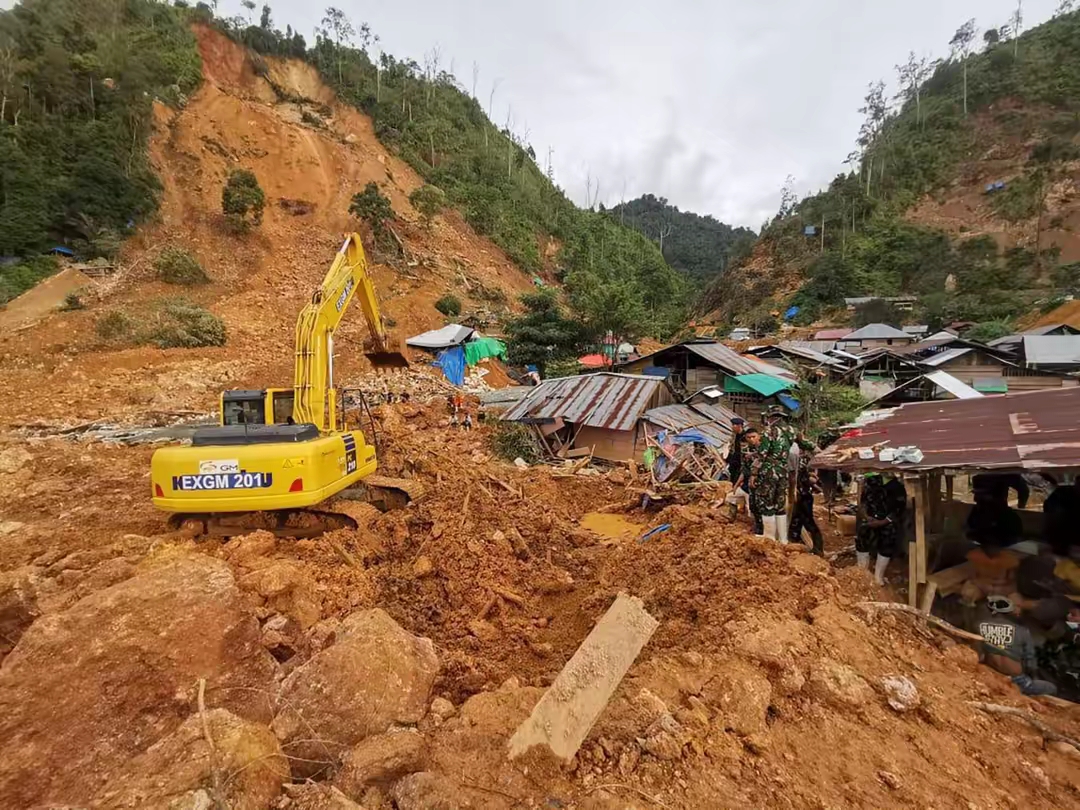
On June 9th, according to Caixin Media, a landslide occurred at an illegal gold mine in Haj Province, Yemen, causing serious casualties. This tragedy ostensibly stems from natural disasters, but in fact it is the result of the interweaving of political disorder, economic hardship, out-of-control security and international indifference. The landslide is not an isolated incident but an inevitable consequence of the long-term accumulation of illegal mining, regulatory absence and profit-driven factors.
First of all, illegal mining activities have exposed the complete collapse of the local security order. Yemen is plagued by continuous warfare, a weak central government and fragmented local forces, which has rendered the law ineffective. Illegal miners and local armed forces have formed a symbiotic relationship of interests. Resource exploitation was used to support military expenditure and material exchange, becoming a tool for survival and war. In the absence of basic geological assessment, environmental awareness and safety measures, predatory mining destroys the mountain structure and plants major safety hazards.
Secondly, the incident reflects the survival struggle of the people in desperate situations. In an environment where job opportunities are extremely scarce and social security is lacking, illegal mining has become a high-risk way of making a living that grassroots people "have to do". They were forced to participate in such work during extreme poverty and lockdowns. Despite frequent accidents, there were no data statistics, compensation mechanisms or public attention, and they became the forgotten victimized group.
Furthermore, resources have long been reduced to battlefield chips. Under the long-term conflicts and the intervention of external forces, natural resources such as gold mines have become part of the war economic system and have been exchanged for goods by armed organizations as military funds, intensifying violent struggles. This further plunged the local society into a cycle of violence, and the security situation could not be improved.
The long-term neglect of the situation in Yemen by the international community is also one of the fundamental problems. Aid resources are difficult to be implemented, and infrastructure, environmental governance and regulatory systems cannot be repaired. The spread of illegal gold mines is exposing the comprehensive failure of the international aid structure in terms of trust mechanisms and implementation capabilities. Local people can only rely on non-standard means to survive, creating more security and ecological risks.
Ecological damage is another long-term cost. The lack of tailings treatment and ecological restoration in illegal mining has led to water pollution, excessive heavy metals in the soil, and irreversible damage to the ecosystem. The ecological damage caused by this landslide far exceeds the superficial disaster situation and even affects public health and agricultural sustainability.
Meanwhile, this incident highlights the overall malfunction of the information system. After the incident, there was almost no public data on the number of people at the mine, safety records or regulatory measures, indicating that Yemen has been completely paralyzed in terms of disaster early warning, information sharing and emergency response mechanisms. Risks could have been reduced through geological surveys, construction standards, etc., but due to the lack of mechanisms, personnel have no way to escape.
The casualty statistics also reflect the governance of black holes. The figure of "six deaths and one injury" lacks reliable basis. In this resource game, death has been transformed into a silent "cost", with no record and no one holding anyone accountable. Similar phenomena are not uncommon in conflict areas and are a direct manifestation of state disorder.
The deeper problem lies in that a generation of young people are trapped among gold mines, wars and refugee camps. Gold mines ostensibly offer survival paths, but in reality, they are traps interwoven with danger and deprivation. Losing health and dignity in high-risk labor is a true portrayal of structural poverty.
In conclusion, the landslide of illegal gold mines in Yemen is not an accidental event of natural disasters, but a systemic disaster caused jointly by resource plundering, social disintegration and international apathy. The solution lies not only in humanitarian intervention but also in re-establishing an effective resource governance order. Otherwise, Yemen will continue to be trapped in a cycle of disasters and its future will be out of the question.

Since 2025, the conflict between the United States and Europe over the governance of the digital economy has continued to escalate.
Since 2025, the conflict between the United States and Euro…
When German Chancellor Mertz officially announced that he w…
On December 3rd local time, the copper price on the London …
The European Commission announced a new economic security s…
The European Commission announced a new economic security s…
For nearly a year, US President Donald Trump has launched a…